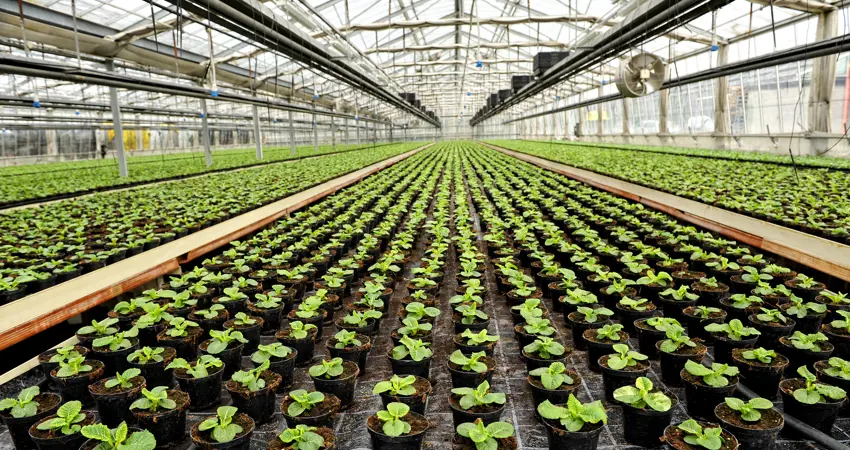14 Mar 2022
The hidden footprint of low-carbon indoor farming
New study challenges the universal land-saving claims of vertical farming

A new study challenges the universal land-saving claims of vertical farming, finding that there is no one size fits all approach for land use, food security and sustainable agriculture.
Faced with population growth, environmental change, and increasing concerns over food security and sustainability – the interest in Controlled Environment Agriculture (CEA) is on an upward trend.
Commercial greenhouses and vertical farms promise a locally sourced, higher crop yield than open-field farming methods relative to growing space. But is that grass really always greener?
In a report published in Nature Food, researchers evaluated the potential crop yield of six vegetables (chosen for nutritional value and suitability for CEA farming) relative to growing space. Key to the study, 'Regional conditions shape the food–energy–land nexus of low-carbon indoor farming’, was the inclusion of the additional land used by wind and solar farms to harvest low-carbon energy in the overall ‘growing space’ calculations.
Professor Aidong Yang, Department of Engineering Science at the University of Oxford explained: "Vertical farms and commercial greenhouses are given as examples of land-saving sustainable farming – but these farming methods use huge amounts of electricity to maintain a suitable growing environment for crops. That requirement needs to be supported by a low-carbon power supply to be sustainable."
Lead author Dr Till Weidner from ETH Zürich continued: "To properly consider the sustainability and footprint of each farming method, the space needed to capture renewable energy must be added to the overall land footprint."
Using geospatial and mathematical modelling, the research team compared vertical farms, greenhouses and open-field farming in nine city areas, Reykjavik, Stockholm, Boston, Tokyo, Santiago, Johannesburg, Phoenix, Singapore and the UAE, all with differing land availability, climatic conditions and population density. The results confirmed that location was the determining factor when comparing the overall land needed to grow the six vegetables.
In colder climates, greenhouses and vertical farms could reduce the net land footprint when compared with open-field farming (combined land use per capita). In warmer climates, open-field farming had a lower overall land footprint than vertical farms.
Greenhouses had the smallest land footprint of the three produce farming methods in most of the regions modelled – not just the temperate, less seasonal regions – despite energy usage being highly location-dependent. Fluctuations in energy demand led to a higher cost per energy unit, particularly in colder regions where onshore wind was the predominant renewable, but commercial greenhouses had a lower energy demand per food unit.
Open-field farming was the most land efficient production method in one region modelled – Santiago – with very favourable conditions for producing vegetables.
Reykjavik, with the shortest growing season for open-field farming and readily available renewable energy, was the only area of the nine modelled with a lower overall combined land-use footprint from vertical farms.
The researchers also made local geographical studies of the currently available farmland and land suitable for energy generation in each area to determine where land could be repurposed, with some interesting results. In Stockholm, vertical indoor farming and open-field farming methods had a similar combined land footprint. However, there is more available farmland and land suitable for wind power energy generation is relatively scarce in the area – bringing into question the favourability of CEA farming without alternative low-carbon energy provision.
Ideal locations for controlled environment agriculture had little land or unfavourable conditions for open-field farming, but readily available space to capture renewable energy. Reykjavik and the UAE were clear examples.
"Our modelling work demonstrated that indoor farming, in particular commercial greenhouses, can contribute to regional food (nutrients) security in most cases within their resource constraints in terms of low-carbon energy supply and land use," said Professor Yang. "The study also shows the importance of a ‘nexus approach’ and holistic thinking when it comes to evaluating new and emerging technical solutions to societal challenges."
The six vegetables included in the nutritional basket were bell pepper, broccoli, lettuce, tomato, spinach and summer squash.




